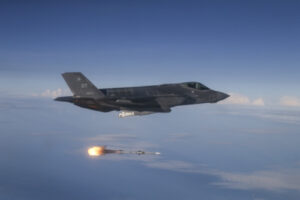Helicopter News
-
HN for Wed., Feb. 3, 2016
- Army Commission’s Solution To Aviation Restructure Adds $165 Million In Annual Costs
- MD Helicopters To Supply Six MD 530G Scout Attack Helicopters To Malaysia
- Next President Will Grapple With Defense Acquisition Bow Wave, Study Finds
- Lockheed Martin Posts Higher Sales, Earnings; Combining IT Business With Leidos
- Raytheon Provides Coyote UAVs To NOAA For Hurricane Use
-
 Uncategorized
UncategorizedRaytheon Provides Coyote UAVs To NOAA For Hurricane Use
Raytheon [RTN] is providing its Coyote Unmanned Air System (UAV) to the National Oceanic and Atmospheric Administration (NOAA) for hurricane tracking and modeling, the company said Jan. 20. The Coyote […]
-
 Uncategorized
UncategorizedLockheed Martin Posts Higher Sales, Earnings; Combining IT Business With Leidos
Lockheed Martin [LMT] on Jan. 26 reported higher fourth quarter sales and earnings, which beat consensus estimates, and announced it is separating its realigned information technology and services segment and […]
-
 Uncategorized
UncategorizedNext President Will Grapple With Defense Acquisition Bow Wave, Study Finds
After years of stagnant Pentagon budgets, the next presidential administration will face a defense acquisition bow wave in the early 2020s and will need an influx of funding to pay […]
-
 Uncategorized
UncategorizedMD Helicopters To Supply Six MD 530G Scout Attack Helicopters To Malaysia
MD Helicopters, Inc. (MDHI) was selected in a bid to supply six MD 530G Scout Attack Helicopters to Malaysia’s Ministry of Defense, the company said Feb. 1. The MD 530G […]
-
 Uncategorized
UncategorizedArmy Commission’s Solution To Aviation Restructure Adds $165 Million In Annual Costs
The National Commission on the Future of the Army proposed an aviation restructure solution that keeps AH-64 Apache helicopters in the Army National Guard, but it would cost an extra […]
-
HN for Wed., Jan. 20, 2016
- U.S. Soldier Killed, Rescue Helicopter Damaged During Firefight In Afghanistan
- Army Eyeing Large Vertical Lift Unmanned Aircraft To Eliminate Dependence On Runways
- Lockheed Martin Nets $31 Million Contract To Maintain Apache Fire Control Systems
- France Orders Six More NH90 Helicopters For Troop Transport
- FAA Releases Smartphone App For UAS Users
-
 Uncategorized
UncategorizedFAA Releases Smartphone App For UAS Users
After completing initial beta testing, the Federal Aviation Administration (FAA) on Jan. 6 released a Smartphone app to enable users of unmanned aircraft systems (UAS) to fly their aircraft more […]
-
 Uncategorized
UncategorizedFrance Orders Six More NH90 Helicopters For Troop Transport
The French Defence Procurement Agency (DGA) ordered six more NH90 helicopters in the tactical troop transport (TTH) configuration, Airbus said Jan. 7. Adding the newly ordered rotorcraft would bring the […]
-
 Uncategorized
UncategorizedLockheed Martin Nets $31 Million Contract To Maintain Apache Fire Control Systems
The Army in December awarded Lockheed Martin [LMT] a $31.8 million sustainment contract for the AH-64D/E Apache attack helicopters equipped with the advanced electro-optical fire control system known as the […]
